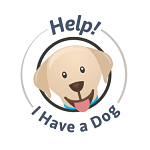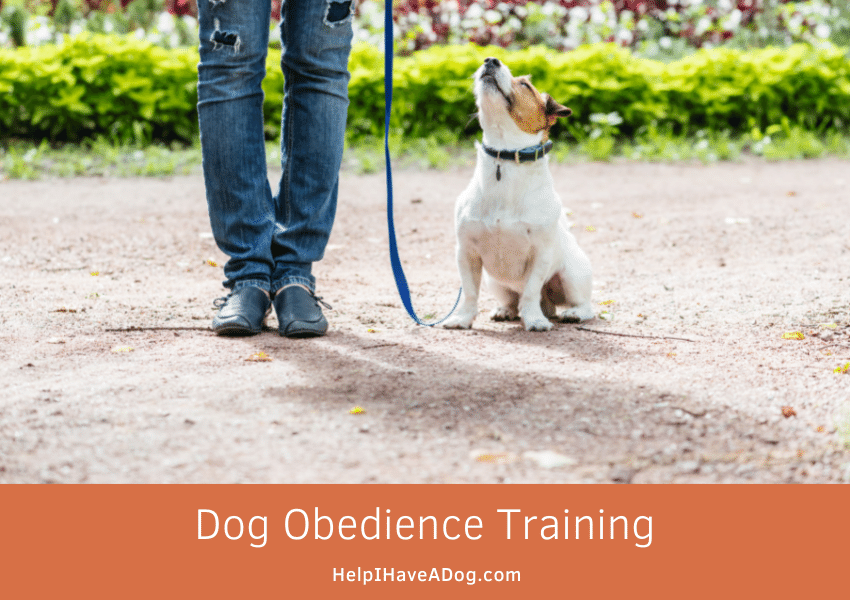Training your dog should be an enjoyable and rewarding experience. That applies to both you and your dog. If your dog is stressed or fearful, they won’t learn what you want them to.
Good dog training consists of three basic steps. If done right and in the correct order, you’ll end up with a happy, well-trained dog.
The Three Dog Obedience Training Steps
The three dog training steps are:
- Teaching your dog
- Correcting your dog
- Proofing your dog’s training so they’re able to perform in any environment
Step 1: The Teaching Phase
During this first phase, you are teaching the dog what a command means and what you want them to do. You can use this step whether you are teaching your dog to “Sit” or something more advanced.
You have to teach the dog before you can move on to do anything else. It’s important to make teaching as much fun for your dog as possible. That applies not only during this step but the steps that follow too.
Dogs learn best when you keep things fun and it makes it more exciting for you to train them. If your dog thinks training is like a game, they’ll have a good attitude and enjoy learning.
Step 2: The Correction Phase
During this phase you know your dog knows the exercise but they refuse to do it. When this happens you give a verbal correction or ignore them.
Your dog learns to do what you ask every time. Although you’re correcting your dog, you should still keep this phase fun. Maintain a positive attitude toward your dog. Don’t train your dog when you’re angry, tired or upset. If you start getting frustrated, stop the training session.
Step 3: The Proofing Phase
When your dog is doing everything well you start increasing the distractions present. The aim is that they learn to perform in any environment.
This means adding sounds, things moving and other people in the room. It also includes taking your dog to new places to practice the exercises.
Proofing helps to make your dog perfect at performing the exercises. They learn to ignore the distractions.
Take your time. It’s more important to get things right than to rush your dog’s training. It can take a long time to proof some commands so that your dog performs them every time.
During this phase you’ll likely be working without the leash so plan to work in enclosed areas at first. Keep to this until you’re sure you can trust your dog in open areas.
Take Your Time
By taking your time on each step you’ll have a dog that works well in your living room without any distractions. Not only that, but the same will also apply outside around other people and distractions.
The secret is to take the time to do each step well and make it fun for both you and your dog.
Start Early
Starting dog training and socialization at an early age will save many problems in the future. It’s fun to be a dog owner but it also brings with it some responsibilites.
Your dog does what they do through habit. And if you put up with their bad habits, they won’t grow out of them. And ultimately, you’ll be the one suffering because of this.
It’s best to start early with the dog training lessons. Your puppy relies on you. It’s your job to help them overcome their bad behavior and reinforce the wanted behavior. This means honing their behavior, habits, and temperament. This is why dog training and socialization training are so important.
Training Your Dog at Home
Young dogs often suffer from separation anxiety. As a result they’ll often whine and bark. They’ll also chew, make a mess and do other annoying things. You need to be aware it’s tough for your puppy to get used to their new environment. So when it comes to house training you should start by setting boundaries. After that you can start introducing new areas. Let your dog know which behaviors that you like and those you don’t.
Don’t be angry when your dog doesn’t respond to training as quickly as you’d like. Things such as toilet training and leash training are take time; they’re not overnight things. Positive reinforcement training, where you use lots of treats and praise, is needed.
It’s best to start as soon as possible so you correct your dog’s old ways. You should aim to make the training sessions as much fun as possible. Use the commands you want your dog to learn as often as possible.
Don’t shout at or hit your dog. If needed use a punishment such as ignoring them for a short time, if you need to correct them.
Learning Socialization Skills
The socialization period for dogs is the first 14-20 weeks. This is when they go from a puppy to an adult dog. And it’s also the time when they change their behavior and character. Plus, it’s also the time they get used to their family and the people in the house.
It’s best to allow your dog to get used to the house. This includes everyone who lives there.
It’s also a good idea to expose your dog to other dogs and other animals too. This lets them learn they’re not the only one living in that area. Take them for walks so they see what’s in the surrounding area outside your gate.
The aim is to get them socialized so they don’t go crazy or get stressed when they come across other objects, animals, and strangers. The more they’re socialized as a puppy, the better they’ll be when they’re grown up.
You’ll need plenty of patience during this socialization period. Your puppy imitates what they see so you need to remain calm and behave appropriately.

